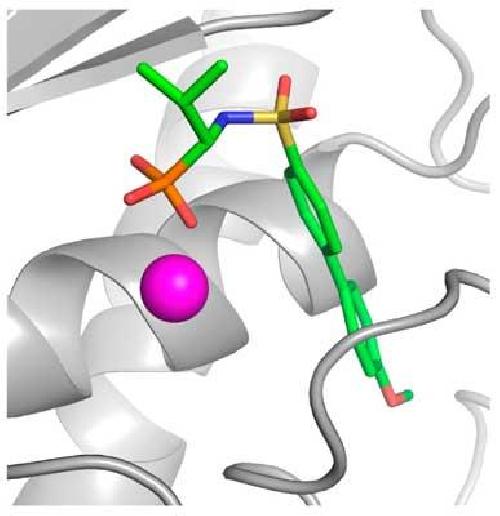Matrix metalloproteinases (MMPs) are zinc-dependent endopeptidases, responsible for the degradation of the extracellular matrix (ECM). Their involvement has been demonstrated in several diseases, among which chronic inflammation and cancer; therefore, they have been considered interesting therapeutic targets. The design of MMP inhibitors (MMPIs) has largely focused on development of various compounds containing a zinc binding group (ZBG) in their structure, with the hydroxamate being the most potent one.
Currently, there are no MMPI containing hydroxamate function as ZBG in the market, mainly due to their proven toxicity. An alternative function chelating the zinc ion would ensure a better selectivity. This latter aspect is mandatory to obtain clinically exploitable compounds. In this review the phosphonate and bis-phosphonate groups as the ZBG are considered in the development of selective and potent MMPIs.
The authors have been working since a long time on MMP inhibitors containing alternative zinc-binding group to hydroxamate, focusing in particular on phosphonic acids, thus contributing to this still interesting research field.
 This research contains a comprehensive review of known phosphonate-based MMP inhibitors. Credit: Dr. Paolo Tortorella, Bentham Science Publishers
This research contains a comprehensive review of known phosphonate-based MMP inhibitors. Credit: Dr. Paolo Tortorella, Bentham Science Publishers
Phosphonate-based inhibitors are classified on peptide phosphonate; sulphonamide and sulfonyl phosphonate, the most potent; carbamoyl phosphonate, and bisphosphonate that have been identified more recently with an interesting activity on bone resorption.
Moreover, the binding with the MMP active site is discussed in the research paper, 'Phosphonate Emerging Zinc Binding Group in Matrix Metalloproteinase Inhibitors', published in Current Drug Targets.
source: Bentham Science Publishers